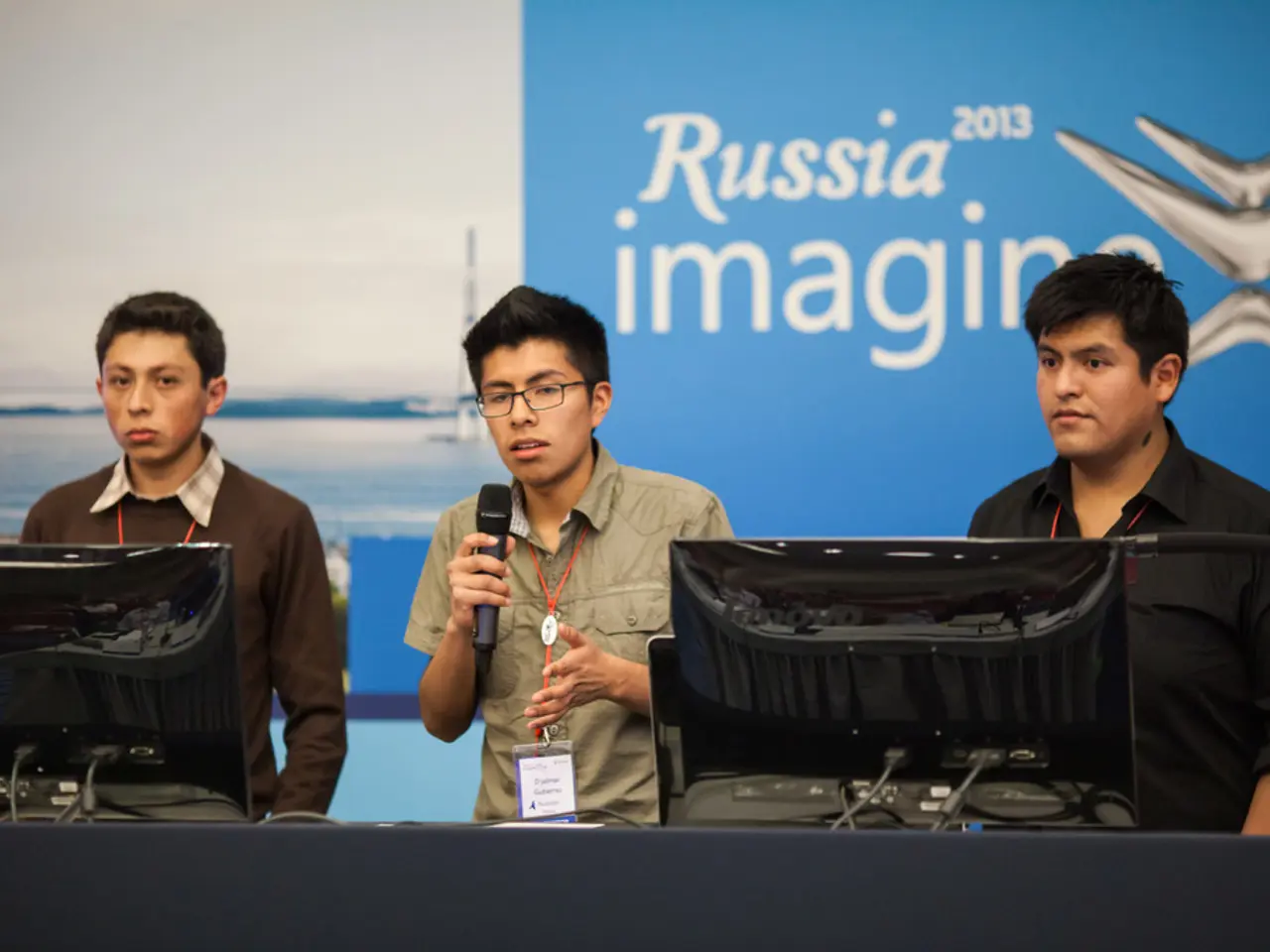Trump-Putin Face-to-Face in Alaska, Diverse Ambitions
In the upcoming Alaska summit between President Donald Trump and Vladimir Putin, scheduled for Friday, the Russian leader has clear objectives and expectations.
Putin's Goals
Vladimir Putin aims to improve Russia's strategic position in the Russo-Ukrainian War. He seeks to potentially drive a wedge between the United States and Europe or Ukraine, reducing external pressure on Russia and negatively affecting Ukrainian morale [3].
Holding the summit is seen as a diplomatic victory for Putin, marking his first visit to a Western country since the full-scale invasion of Ukraine in 2022 [1][3]. Putin also proposes a ceasefire proposal that would require Ukraine to cede territories, such as the Donbas region, to Russia, a condition fundamental to his negotiation strategy [3].
Moreover, Putin intends to use time to his advantage, potentially stalling negotiations and maintaining an open channel for future talks without significant concessions [4].
Expectations
Putin does not necessarily expect a deal to be reached during the summit. Instead, the meeting is seen as an opportunity to set the stage for future negotiations or to manipulate international relations to Russia's advantage [3][4]. Putin also hopes to create tension between the U.S. and its European allies or Ukraine, which could reduce international pressure on Russia and give it more room to maneuver in the conflict [3].
Despite the lack of concrete agreements, Putin seeks to portray the meeting as constructive and beneficial for future diplomatic engagements [5].
The central topic of the Alaska summit is the settlement of Russia's war in Ukraine. Trump has expressed doubts about his ability to convince Putin to stop targeting civilians in Ukraine, but he believes Putin wants to make a deal to end Moscow's war in Ukraine [6].
Trump has described the Alaska meeting as "setting the table for the second meeting" between Putin and Zelenskyy [7]. Peskov also stated that there are no plans for Putin and Trump to formalise any agreements [8]. Trump has played down the importance of the Alaska summit in recent days, yet he still believes some sort of a deal will be signed in Alaska [9].
The White House officials have called the Alaska meeting a "listening exercise," and Trump has made similar statements about Putin wanting to end the war in Ukraine in the past [10].
The Kremlin is using the Alaska summit to portray Russia as a world power equal to the United States, and economic cooperation and global security will also be discussed during the summit [11]. European leaders and Zelenskyy are expected to attend talks after the Alaska summit with Putin and Trump [12].
Russian state-controlled media have been pushing the Yalta summit comparison, claiming that "people who have a real influence on global processes" will be at the table in Alaska [13]. The Russia-installed head of the annexed Crimea region, Sergei Aksyonov, claims that Trump should visit the region to agree to a "new Yalta peace" [14].
However, Donald Trump has rejected claims that a one-on-one meeting with Putin could be perceived as a reward for the Russian president [15]. The Russian authorities have stated that the US administration is making efforts to end the hostilities in Ukraine [16].
In conclusion, the Alaska summit between Donald Trump and Vladimir Putin promises to be a significant event, with Putin's goals centred around strengthening Russia's position in the ongoing conflict and using the summit as a political and diplomatic tool. The central topic of the summit is the settlement of Russia's war in Ukraine, and the outcome could have far-reaching implications for international relations.
- As the Alaska summit approaches, there's a growing interest in international politics and general news surrounding war-and-conflicts, particularly the Russo-Ukrainian War, as Vladimir Putin aims to capitalize on this event to improve Russia's strategic position.
- In the strategic game of diplomacy, Vladimir Putin seeks to manipulate international relations, specifically driving a wedge between the United States and its European allies, or Ukraine, as a means to reduce external pressure on Russia and potentially negotiate unfavorable terms in the Russo-Ukrainian War.






